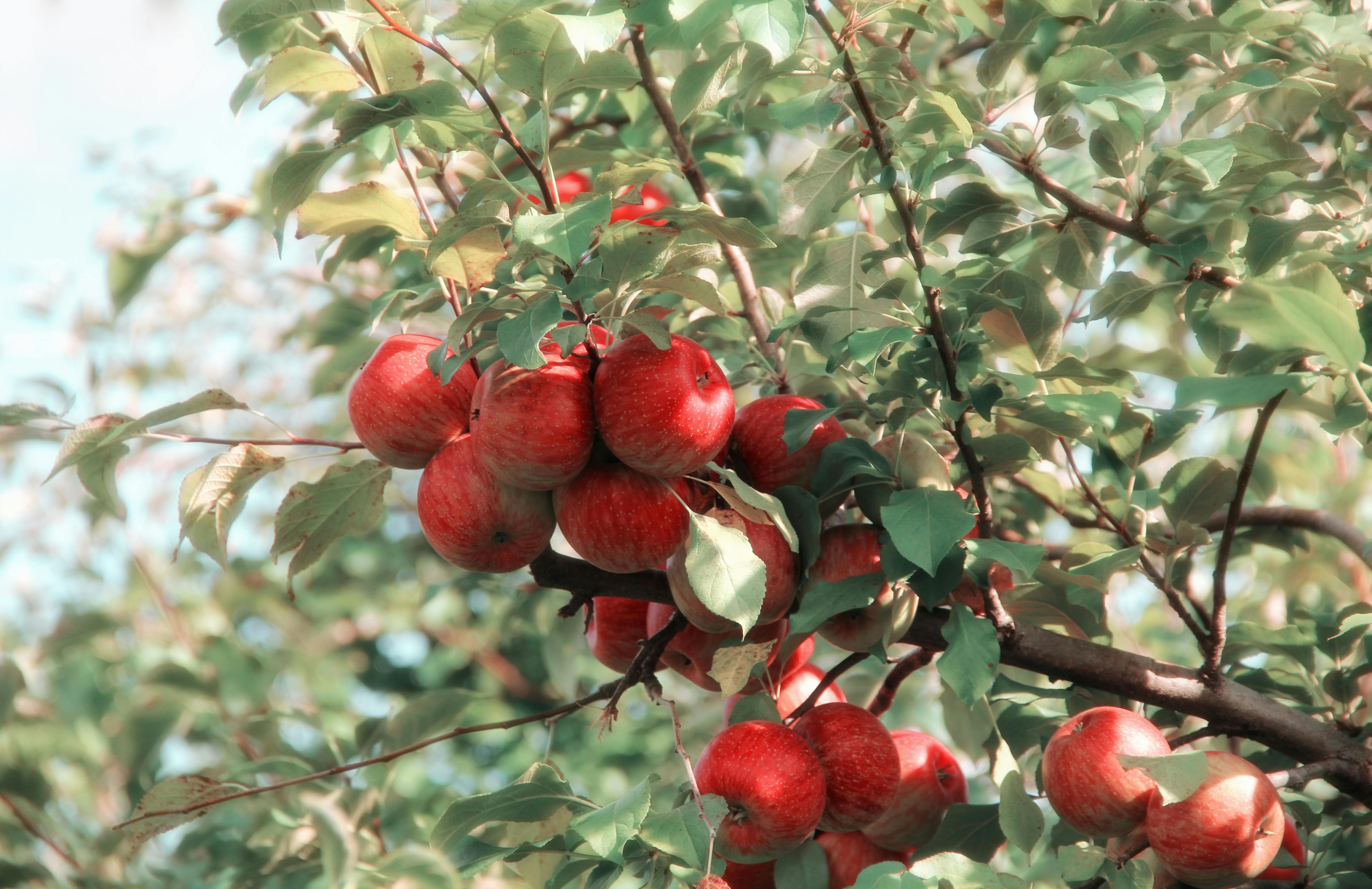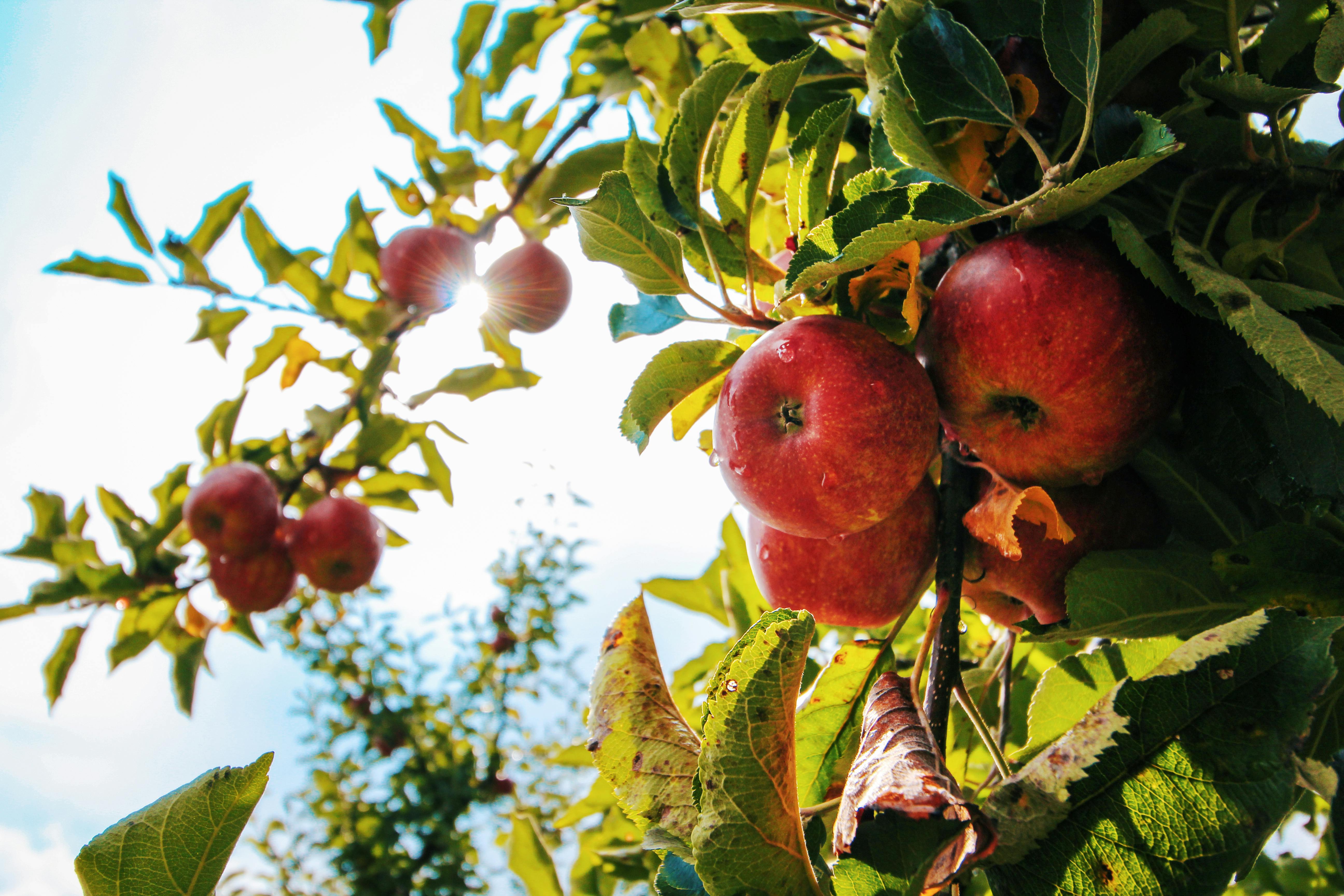Apple Tree Fruiting Factors
There are several factors that impact the fruiting of an apple tree. The quality of the soil, the amount of sunlight and water it receives, and the variety of apple tree planted are all important elements in successful fruiting. Proper care and maintenance are essential for a successful harvest. Soil quality is critical to ensure good root growth and nutrient uptake. An apple tree needs at least eight hours of direct sunlight per day in order to produce fruit, so selecting an appropriate location is key. Watering is also essential to improving soil quality and encouraging fruit formation; however, over-watering can cause issues with disease and pest infestations. The type of apple tree will also affect the rate and amount of fruit produced; certain varieties bear more or less fruit than others, depending on their characteristics. Finally, pruning is an important step in ensuring a healthy tree that produces plenty of fruit.In summary, there are several factors that can influence how much fruit an apple tree produces. Good soil quality, adequate sunlight and water, proper variety selection, and regular pruning are all essential components for a successful fruiting season. By paying attention to these details, you will be able to harvest plenty of delicious apples from your own backyard!
Average Time for Apple Trees to Bear Fruit
Apple trees typically take between three and five years to produce fruit. The exact time frame depends on a variety of factors, including the type of apple tree planted and the climate it is grown in. Generally, apple trees are slow-growing and require a significant amount of care and attention during their early years.The most important factor in determining how quickly an apple tree will bear fruit is the type of variety planted. For instance, dwarf apple trees have a shorter lifespan compared to other varieties and are capable of bearing fruit in as little as two years. On the other hand, standard apple trees may take up to seven years before they start producing apples.The weather conditions during the growing season also play an important role in how quickly an apple tree begins producing fruit. Trees need a certain amount of sunlight and water each day in order to properly grow, so if temperatures stay too cold or hot for extended periods of time, it can significantly delay when apples start forming. Additionally, pests or diseases that affect the health of the tree can also lead to delays in fruiting.Finally, proper maintenance is essential for encouraging healthy growth in your apple tree and ensuring it produces fruit when expected. Pruning helps maintain the shape and structure of the tree while improving air circulation around its branches which can help speed up fruiting times. Additionally, fertilizing your tree with an appropriate fertilizer can improve root development which will lead to more vigorous growth overall.Overall, while there is no definitive answer as to how long an apple tree will take before bearing fruit due to various environmental factors playing a role, you can expect your tree to bear apples somewhere between three and seven years from planting depending on its variety and climate conditions. With appropriate care and maintenance, you should be able to enjoy freshly picked apples from your own backyard at some point during this period!When is the Best Time to Plant an Apple Tree?
Planting an apple tree is the best way to enjoy the sweet taste of this fruit. However, the best time to plant an apple tree can vary depending on where you live and what type of apple tree you have. Generally, it is best to plant an apple tree in late winter or early spring when the ground is still cool and wet. The ideal temperature range for planting an apple tree is between 40 and 55 degrees Fahrenheit.When choosing a location for your apple tree, it is important to select a spot that receives plenty of sunlight and has good drainage. Apple trees require at least six hours of direct sunlight per day in order to produce a good crop of fruit. Poorly drained areas can cause root rot, which can severely damage or even kill your tree.When planting your apple tree, make sure that you dig a hole twice as wide as the root ball and just as deep as the top of the root ball. After planting, fill in around the roots with soil and apply two inches of mulch around the base of the trunk. This will help keep moisture in the soil and protect against frost damage in colder climates.Once planted, water your apple tree regularly during its first few years until it becomes established. Pruning should be done in late winter or early spring before new growth begins to ensure that branches are not damaged by pruning tools. Finally, fertilize your apple tree each year with a balanced fertilizer formulated specifically for fruit trees.Following these tips will help ensure that you have a healthy and productive apple tree for many years to come!Are There Different Types of Apple Trees?
Yes, there are different types of apple trees. Apple trees come in a variety of sizes, shapes, and characteristics. The most common type of apple tree is the standard-sized apple tree. Standard-sized apple trees typically grow to be about 15-20 feet tall and have a single trunk with multiple branches that produce apples. Dwarf apple trees are much smaller than standard varieties, growing only to about 8-10 feet tall and having a single trunk and small branches that produce fewer apples. Semi-dwarf apple trees are in between the two, reaching up to 12-15 feet tall and having multiple branches for more fruit production.Apple trees can also be classified according to their fruiting habits. Some varieties produce fruit every year, while others bear fruit biennially or irregularly. Those that bear fruit every year tend to produce larger crops than those that bear fruit biennially or irregularly. Certain types of apples may also be more disease resistant than others, so choosing a variety with good disease resistance is important when planting an orchard.In addition to size and fruiting habits, there are many variations amongst different apple varieties in terms of flavor and color. From sweet to tart, green to red, there is an endless array of options when it comes to selecting the right kind of apple tree for your home orchard or garden!
Signs that an Apple Tree is Ready to Bear Fruit
Apple trees are a rewarding and enjoyable addition to any garden. When cared for properly, they produce sweet and delicious fruit for many years. In order to get the most out of your apple tree, it is important to recognize when your apple tree is ready to bear fruit. Here are some signs that an apple tree is ready to bear fruit:1. Blossoms: The most obvious sign that an apple tree is getting ready to bear fruit is the presence of blossoms on the tree. When your apple tree has flowers, it indicates that it is getting ready to produce fruit.2. Thinning Leaves: Another sign that your apple tree may be getting ready to bear fruit is if you start seeing the leaves thinning out. This can happen as the tree starts investing more energy into producing apples than maintaining its leaves.3. Fruit Size: The size of the apples on your tree can also be a sign that your apple tree is ready to bear fruit. If you notice that the apples on your tree have grown significantly larger, then this could be a sign that they are ripe and ready for harvest.4. Color Change: As apples get closer and closer to being ripe, their color will start changing from green to yellow or red depending on the variety of apple you have planted in your garden. If you notice color changes happening on your apples, then this could be a sign that they are almost ripe and ready for harvest!By watching for these signs, you can ensure that you are harvesting your apples at just the right time so you get maximum flavor and sweetness out of each one.
Preparing Your Apple Tree for Fruiting Season
The key to a successful apple harvest is preparing your tree ahead of time. To ensure a bountiful crop, you need to take measures to protect the tree from pests and disease, and provide the right conditions for optimal growth. Here are some tips for getting your apple tree ready for fruiting season:• Prune the Tree: Pruning your apple tree is essential for encouraging strong, healthy growth. You should prune it before the start of fruiting season to remove any dead or diseased branches that could potentially spread infection or attract pests. In addition, trimming back any overly-long branches will help improve sunlight penetration and air circulation, which are both necessary for producing a good crop.
• Mulch Around the Base: Applying mulch around the base of the tree will help keep weeds at bay, retain moisture in the soil, and prevent soil erosion. This will give your apple tree access to all the nutrients and water it needs to thrive.
• Fertilize Regularly: Regular fertilization is also important for promoting healthy growth and development. Choose an organic fertilizer that’s specifically formulated for fruit trees, and apply it according to package instructions. This will help ensure that your apple tree gets all the nutrition it needs throughout its growing season.
• Pest Control: Finally, be sure to keep an eye out for signs of pests or disease throughout fruiting season. If you notice any issues, take steps to address them right away before they cause further damage. There are many organic pest control methods available that can be used to keep your apple tree free from harm.
By following these tips, you can ensure that your apple tree is in top condition come harvest time. With a little preparation now, you’ll be rewarded with a bountiful crop of juicy apples later!
Fertilizing, Pruning, and Watering
Apple trees require regular fertilizing, pruning, and watering to produce fruit. Fertilizer should be applied in early spring when the tree is starting to grow. Use an organic fertilizer like fish emulsion or compost tea for best results. Pruning should be done in late winter or early spring to keep the tree healthy and encourage fruit production. Be sure to remove any dead or diseased branches as well as thinning out crowded areas of the tree. Watering is essential for apple trees, especially during periods of drought. A thorough deep watering once a week is recommended for best results.Pest Control
Apple trees can be susceptible to pests such as aphids, mites, and scale insects. Regularly inspect your tree for signs of pests and take action if necessary. Natural methods such as beneficial insects and horticultural oils are effective ways to keep pests at bay without harming beneficial insects like bees and butterflies.How Long After Planting Can I Expect My Apple Trees to Bear Fruit Compared to Lime Trees?
Apple trees typically take 3 to 5 years to bear fruit after planting, while lime trees may start producing in about 2 to 3 years. Understanding the differences in growth can help manage expectations. For those curious about citrus, exploring the lime trees fruit production timeline can provide valuable insights.
Sunlight and Temperature Requirements
Apple trees need plenty of direct sunlight to produce fruit so make sure the tree is planted in a sunny spot with at least 6 hours of direct sunlight each day. They also need protection from cold temperatures so plant them in a sheltered area away from strong winds. Generally speaking, apple trees can tolerate temperatures down to -30°F (-34°C).
Conclusion
Apple trees can take up to four years to produce their first fruits, though some cultivars produce fruit sooner. The time it takes for an apple tree to bear fruit depends on many factors including the variety of the tree, how it was cared for, and the climate in which it is planted. Planting multiple varieties of trees that bloom at different times can extend the season for harvesting apples. Proper care, such as pruning and fertilizing, will also help speed up the process of bearing fruit. With patience and good care, apple trees can provide delicious fruits year after year.Apple trees are a wonderful addition to any garden or orchard. They are easy to grow from seedlings or purchased saplings and can be kept small with regular pruning. With proper care and patience, they will provide a bounty of delicious apples for years to come.



